Blossoms in the Dust

Brief Synopsis
Cast & Crew
Mervyn Leroy
Greer Garson
Walter Pidgeon
Felix Bressart
Marsha Hunt
Fay Holden
Film Details
Technical Specs

Synopsis
In 1906, as the wealthy Kahly family of Wisconsin happily prepare for an engagement party for their daughter Edna and their adopted daughter Charlotte, the girls promise always to remain close and be happy. Edna, who excitedly told her sister that a young man brashly proposed to her at their father's bank, is shocked when the man, Texan Sam Gladney, comes to her engagement party. An associate of Mr. Kahly, Sam is going home to open a flour mill, but tells Edna that they will marry when he returns next year, even though she is engaged to another man. Edna sees him off at the train station, and over the course of the following months, they correspond and become engaged. On the day that Sam returns, Mr. and Mrs. Keats, Charlotte's future in-laws, tell the Kahlys that their son Allan cannot marry her because she was a "nameless" foundling. Although Allan insists that he will never marry anyone else, Charlotte, who had not known that she was illegitimate, kills herself. Two years later, Edna, who has moved to Texas and married Sam, gives birth prematurely to a boy and is told that she can have no more children. On Christmas Day, a few years later, the family is very happy, but tragedy strikes when their little Sammy drowns in a pony cart accident. Edna hides her grief by becoming a society hostess until Sam and Dr. Max Bresler, who attended her at Sammy's birth, help her to realize that she can fulfill herself by caring for other children. She and Sam set up a day nursery for working mothers, which they finance from their own fortune, but when the price of wheat declines, Sam loses his mill and must sell everything. They then move to Fort Worth and Sam works very hard at a mill job while trying in his spare time to develop a new wheat process. On the day that Edna takes his new process to be notarized, she sees some children in a courtroom and discovers that they are orphans, tagged like cattle, and rejected by prospective adoptive parents because they are illegitimate. She brings two children home, one of whom, a baby named Tony, is ill. With very little money, she opens a storefront orphanage called the Texas Children's Home and Aid Society and arranges for adoptions for her charges, making certain parents and children are well suited for each other. When the wife of a city councilman is not given special treatment by Edna, she feels insulted and convinces the council to close the home for zoning violations. The day that Edna loses the home, Sam collapses, and as he dies, he tells her to keep up the fight. Edna then travels throughout Texas, collecting coins in a milk bottle, and eventually she is able to open a large new home. As the years pass, Edna finds good homes for many children, but realizes that she has additional work to do when she receives a donation from a despondent young woman who discovered that she was illegitimate when she applied for a marriage license. Touched by the similarity between this young woman and Charlotte, Enda determines to change the law that brands children for life and fights to have the word "illegitimate" removed from birth certificates. Her bill is championed by Senator T. R. Cotton, and after she makes an impassioned plea before the Texas legislature, it passes into law. On Christmas Eve, Max tells Edna that he has found a good family for Tony, who is now healthy and as close to Edna as her own son. She wants to give up her work and dedicate herself to him, but just as she is about to go away with him, a policeman comes to the door with two orphans and she realizes that she must help them. She then lets Tony go to his new parents, and as the family leaves, she sits with her two new children.

Director

Mervyn Leroy
Cast

Greer Garson

Walter Pidgeon

Felix Bressart
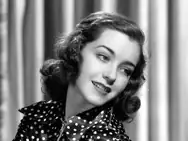
Marsha Hunt

Fay Holden
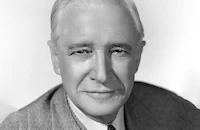
Samuel S. Hinds
Kathleen Howard
George Lessey
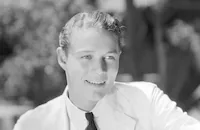
William Henry

Henry O'neill
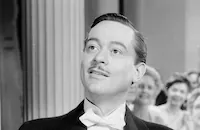
John Eldredge
Clinton Rosemond
Theresa Harris
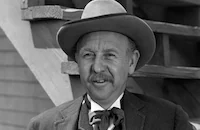
Charlie Arnt

Cecil Cunningham

Ann Morriss

Richard Nichols
Pat Barker
Marc Lawrence
Oscar O'shea

Clarence Kolb
Edith Evanson
Harry Allen
David Clyde

Hope Landin
Jimmy Spencer
Anne O'neal
Nora Perry
Ann Morrison
Lotte Palfi
Dick Rush
Buddy Williams

Edward Keane
Henry Roquemore
Ferris Taylor
Georgia Caine
Claire Dubrey
Ottola Nesmith

Joan Barclay
Paul Barrett
Estelle Etterre
Oliver Cross
Cynthia Westlake
Paul Power
Sheila Darcy
Florine Mckinney
Dora Clemant
Winifred Nimo
William Dudley

Bryant Washburn Sr.
Anne Wigton
George Harris
Frank Darien
John Dilson

Mary Maclaren
Sam Ash
Art Belasco
Emmett Smith
Almira Sessions
Ernie Alexander
Sidney D'albrook

Roger Moore
Edward Fielding
Lester Dorr

Emmett Vogan
Kay Linaker
Gertrude Simpson
Kathryn Sheldon
Carroll Nye

Joseph Crehan
Guy Usher
Edwin Maxwell
William Worthington
Davison Clark
Janet Shaw
Tristram Coffin
Jane Drummond
Emory Parnell
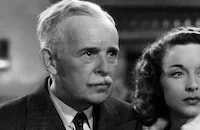
Howard Hickman
Paul Everton
Purnell Pratt
Selmer Jackson

William Wright
Harry Hayden

Edward Mcwade
Harry Worth

Roy Gordon
Douglas Wood
Byron Shores

Cy Kendall

Fay Helm
Cliff Danielson
John Ince
Ed Peil Sr.
Edward Hearn
Mike Pat Donovan
Art Berry Sr.
Ralph Mccullough

Grace Stafford
Jessie Arnold
Willa Pearl Curtis
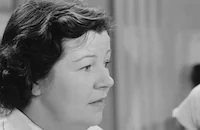
Margaret Bert
Milton Kibbee
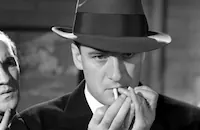
Elliott Sullivan
Jasper Weldon
Harrison Greene
Dell Henderson
Emanuel Turner

Ethel Wales
Nadine Connor
Irene Crane
Carol Coombs
Henry Blair
Sandra Lee Richards
Mary Taylor
Sally Ann Brown
Charles Sargent
Frank Faylen

Howard Mitchell
Marga Ann Deighton
Georgie Cooper
Mrs. Gardner Crane
Crew
Adrian
Daniele Amfitheatrof
Irving Asher
George Boemler
Earl Brent
Earl Brent
Hugo Butler
Mildred Cram
Jack Dawn
Karl Freund
Cedric Gibbons
W. Howard Greene
Sydney Guilaroff
Henri Jaffa
Natalie Kalmus
Mervyn Leroy
Anita Loos
Urie Mccleary
Warren Newcombe
Douglas Shearer
Gile Steele
Herbert Stothart
Herbert Stothart
Walter Strohm
Ralph Wheelwright
Edwin B. Willis
Dorothy Yost

Photo Collections
Videos
Movie Clip



Trailer
Hosted Intro



Film Details
Technical Specs

Award Wins
Best Art Direction
Award Nominations
Best Actress
Best Cinematography
Best Picture
Articles
Blossoms in the Dust
The other comes after Edna is married to a Texas flour mill owner, Sam Gladney (Walter Pidgeon), and they have a child. When their son dies, Edna -- who can never have another child -- is distraught. Those two traumas inspire Edna to devote her life to children and channel her grief over her own child's death into a productive cause.
After her husband Sam's death, Edna starts an influential institution known as the Texas Children's Home and Aid Society in Ft. Worth dedicated to finding good homes for children. In memory of her dead sister she also campaigns to remove the social stigma of illegitimacy from birth certificates. Arguing that "there are no illegitimate babies, only illegitimate parents," the real-life Edna Gladney was able to eventually have the stigma of "illegitimacy" stricken from children's birth certificates in Texas. A female heroine to legions of "blossoms"(children), Edna Gladney became to Texas what Father Flanagan and his Boys Town was to his home state of Nebraska.
Director Mervyn LeRoy, a former child actor who moved into directing, made his mark at Warner Brothers in the Thirties where he directed an impressive slew of films that commented upon the difficulties of the Depression including Little Caesar (1931), I am a Fugitive from a Chain Gang (1932) and Gold Diggers of 1933 (1933). When he moved to MGM, LeRoy turned his talents to directing high production romances and melodramas including Random Harvest (1942), Little Women (1949) and Blossoms in the Dust, which some of his critics construed as a loss of interest in social issues. LeRoy defended Blossoms as having "deep social significance" and stated that "for me always, the sole criterion for selecting a film was that it had a good, solid story and that it had the quality I call 'heart'." In fact, LeRoy said of Blossoms "Between it and Fugitive, I think I have contributed toward making this a better country."
Screenwriter Anita Loos (Red-Headed Woman (1932), Gentlemen Prefer Blondes, 1953) was not so well-schooled in social issue films and initially didn't see enough drama in Blossoms to make an interesting film. But after many tortured attempts to craft a storyline out of Edna Gladney's life story, the morning she planned to admit defeat, Loos says "I woke up to find that a complete story line had been worked out by my subconscious mind during sleep." (from Kiss Hollywood Goodbye by Anita Loos). Loos decided to pivot the story on Edna's belief that even a great orphanage was no match for the loving care of a real home. Loos created the character of a little crippled boy Tony (Pat Barker) who evokes a deep love in Edna, despite his inevitable adoption by another. The brilliance of the Loos screenplay is that it involves the audience on a deep emotional level with Edna's struggle to sponsor the boy without becoming too attached to him in the process.
Loos claimed that Greer Garson was not as maternally motivated as Edna and as an example, recalled (in her autobiography) the rehearsal for a scene where Tony is about to be taken away from Edna and placed with his new adoptive parents. He is told not to cry. "But I can cry inside can't I?" he asks. Loos wrote, "Now any child actor is a natural scene-stealer and it appeared that, during rehearsal, ours had caused even the cameraman and electricians to issue an ultimatum: unless that line was taken away from the little boy she would walk off the set. "It's not in the psychology of a child to ask such a question," she argued. "On the other hand it would be quite in line for me to say "But you can cry inside, darling." That small actor had run up against a more powerful scene-stealer than he was and the argument might have gone on endlessly while the studio clock ticked away at several thousand dollars a tick. So Bernie [Hyman, the producer] insisted we all repair to L.B.'s office for arbitration. And when the tough old autocrat heard that line, he himself dissolved into tears and ordered it to be kept where it belonged, in the mouth of a toddler."
Another potential dilemma involving cast members occurred when director LeRoy discovered that Walter Pidgeon didn't know how to dance prior to a crucial scene between Walter and Greer. In his autography, Mervyn LeRoy: Take One, the director recalled, "I had to dream up some way for him not to dance while it looked like he was dancing. I had the carpenters build a low platform and we put roller skates underneath it. I put the camera on the platform, with Greer and Walter. There were other couples in the scene, and they danced off the platform. Greer and Walter just bounced up and down on the platform, which was revolved on its skate wheels. The result was that it looked as though my principals were dancing skillfully."
Garson and Pidgeon were such a successful onscreen couple in Blossoms that they were soon paired in a number of romantic films including the enormously popular Mrs. Miniver (1942), Madame Curie (1943) and Mrs. Parkington (1944). Their film match-ups proved so reliable Garson was referred to on the MGM lot as "the daytime Mrs. Pidgeon."
Blossoms in the Dust was a 1941 Best Picture nomination, and earned nominations for Garson, as well as for its cinematography, and won an Oscar® for Cedric Gibbons' set design. LeRoy later recalled that with the number of small children perpetually on the set of Blossoms the crew took to calling the film Bugs in the Mud.
Director: Mervyn LeRoy
Producer: Irving Asher
Screenplay: Anita Loos (based on a story by Ralph Wheelwright)
Cinematography: Karl W. Freund, W. Howard Greene
Production Design: Cedric Gibbons
Music: Herbert Stothart
Cast: Greer Garson (Edna Gladney), Walter Pidgeon (Sam Gladney), Felix Bressart (Dr. Max Breslar), Marsha Hunt (Charlotte), Fay Holden (Mrs. Kahly), Samuel S. Hinds (Mr. Kahly), Kathleen Howard (Mrs. Keats), George Lessey (Mr. Keats), William Henry (Allan Keats).
C-100m. Closed captioning.
by Felicia Feaster

Blossoms in the Dust
Marc Lawrence (1910-2005)
Born Max Goldsmith on February 17, 1910, in the Bronx, Lawrence had his heart set on a career in drama right out of high school. He enrolled at City College of New York to study theatre, and in 1930, he worked under famed stage actress Eva Le Gallienne. Anxious for a career in movies, Lawrence moved to Hollywood in 1932 and found work immediately as a contract player with Warner Bros. (an ideal studio for the actor since they specialized in crime dramas). He was cast as a heavy in his first film, If I Had a Million (1932). Although his first few parts were uncredited, Lawrence's roles grew more prominent: a sinister henchman in the Paul Muni vehicle in Dr. Socrates (1935); a conniving convict aiding Pat O'Brien in San Quentin (1937); a menacing thug stalking Dorothy Lamour in Johnny Apollo (1940); the shrewdly observant chauffeur in Alan Ladd's breakthrough hit This Gun For Hire (1942); and one of his most memorable roles as Ziggy, a fedora wearing mobster in the Bogart-Bacall noir classic Key Largo (1948).
Lawrence, when given the opportunity, could play against type: as the prosecuting attorney challenging Tyrone Power in Brigham Young (1940); a noble aristocrat in the Greer Garson-Walter Pidgeon period opus Blossoms in the Dust; and most impressively, as a deaf mute simpleton in the rustic drama The Shepherd of the Hills (both 1941). Better still was Lawrence's skill at comedy, where his deadpan toughness worked terrifically as a straight man against the likes of Joe E. Brown in Beware Spooks (1939); Abbott and Costello in Hit the Ice (1943); Penny Singleton in Life with Blondie (1945); and Bob Hope in My Favorite Spy (1951).
After that, Lawrence's career took a turn downward spin when he was labeled a communist sympathizer during the Hollywood witch hunts of the early '50s. He was exiled in Europe for a spell (1951-59), and when he came back, the film industry turned a blind eye to him, but television overcompensated for that. Here he played effective villains (what else?) in a series of crime caper programs: Peter Gunn, Johnny Staccato, The Untouchables, Richard Diamond, Private Detective; and eventually made a welcome return to the big screen as a returning exiled gangster in William Asher's underrated mob thriller Johnny Cool (1963).
It wasn't long before Lawrence found himself back in the fray playing in some big box-office hits over the next two decades: Diamonds Are Forever (1971), The Man with the Golden Gun (1974), Marathon Man (1976), Foul Play (1978); and The Big Easy (1987). Sure he was cast as a gangster, but nobody could play a rough and tumble mob boss with more style or conviction.
Interestingly, one of his finest performances in recent years was in television, as a severely ill old man unwilling to accept his fate in a fourth season episode of ER (1997-98). His last screen role was just two years ago, as a nimble minded VP in Looney Tunes: Back in Action (2003).
In 1991, Lawrence published a memoir about his venerable career, Long Time No See: Confessions of a Hollywood Gangster that received much critical acclaim. He has also developed a cult following due to his appearances in such offbeat items as From Dusk to Dawn and Pigs aka Daddy's Deadly Darling, the 1972 horror film he directed and starred in with his daughter Toni. He is survived by his wife, Alicia; two children from a previous marriage, Toni and Michael; and a stepdaughter Marina.
by Michael T. Toole
Marc Lawrence (1910-2005)
Quotes
Do I look like a hussy?- Edna
Trivia
Notes
The opening credits contain the following written dedication: "This is the story of a great woman, and of the great work she is doing for humanity. Her name is Edna Gladney, and she lives in Fort Worth, Texas...." Gladney, who at the time of the film's production was fifty-five, founded the Texas Children's Home and Aid Society of Fort Worth, Texas, and was instrumental in the passage into law of a bill that removed the word "illegitimate" from the birth certificates of children born out-of-wedlock. According to M-G-M publicity materials contained in the AMPAS Library file on the film, Gladney had spent over thirty years of her life placing orphans into good homes, and had placed more than 2,000 children.
According to news items in Hollywood Reporter, Joy West, Charles Ray and Jerry Storm were cast in the film. Ray was not seen in the viewed print and the appearance of West and Storm is unconfirmed. M-G-M publicity also notes that a new six-way microfilm developed by Electrical Research Products, Inc. was used for the first time in the film. The materials also indicate that an Irish setter called "Copper" was to be in the film, but he was not observed in the viewed print. The film earned an Academy Award for Art Direction, which went to Cedric Gibbons and Urie McCleary, as well as Edwin B. Willis who worked on the set decoration. Additional nominations included Best Picture, Best Cinematography (Color) for Karl Freund and W. Howard Green and Best Actress for Greer Garson, her second of six. This picture was one of M-G-M's top money-making films of the year and, according to modern sources, began Garson's rise as one of the biggest stars of the 1940s. Blossoms in the Dust was the first of nine pictures in which Walter Pidgeon co-starred with Garson; the last was Scandal at Scourie in 1952. According to an article on Garson in New York Times on July 19, 1942, she did not care for Blossoms in the Dust and was quoted as having said, "The screen is neither a platform nor a pulpit." Garson, Pidgeon and Felix Bressart recreated their roles for a Lux Radio Theatre broadcast on February 16, 1942.















